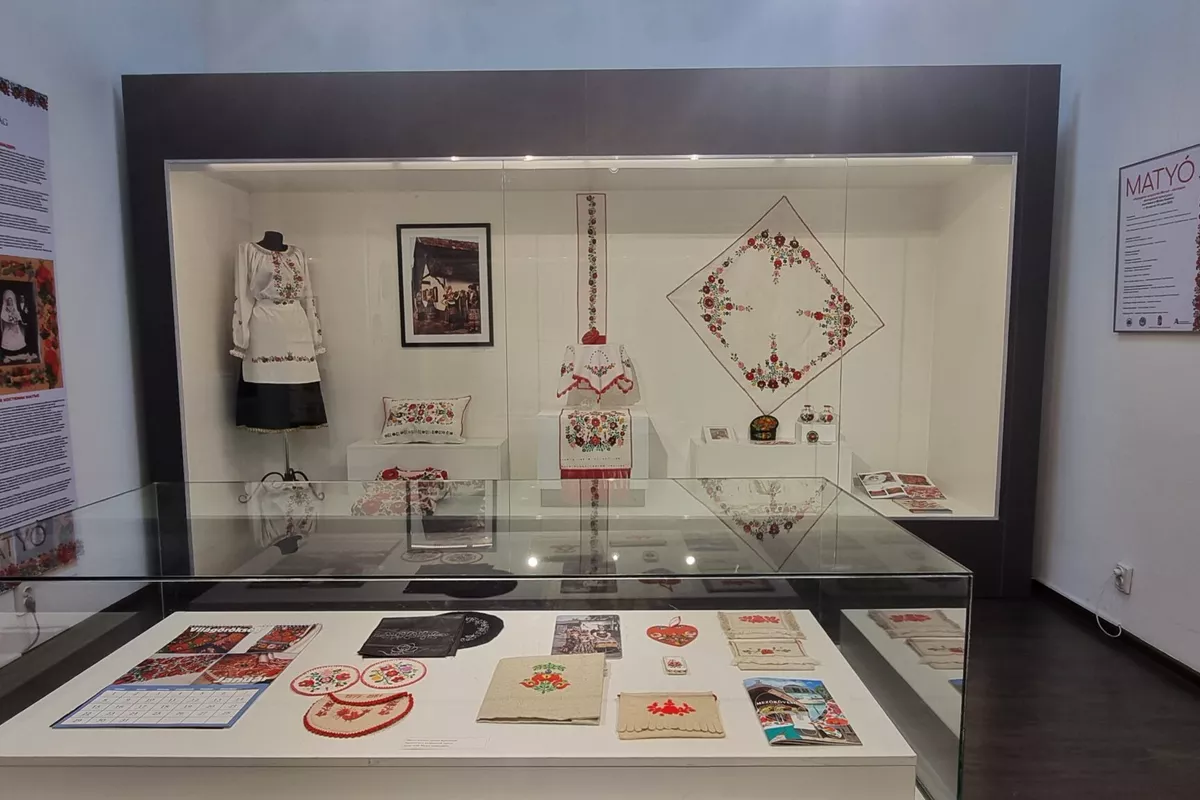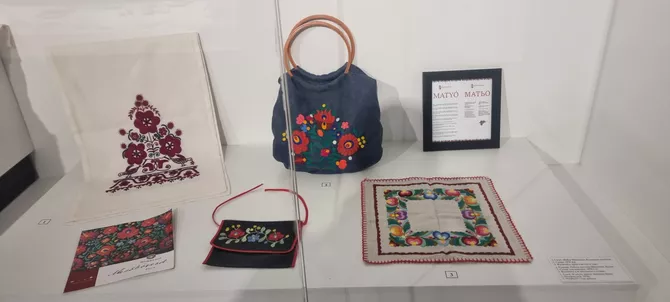
Photo credit: The Astana Times
Kazakhstan is hosting its first-ever exhibition dedicated to Matyó embroidery, a colorful emblem of Hungarian folklore and recognized by UNESCO as part of the Intangible Cultural Heritage, now showcased at the Almaty Museum.
The exhibition features more than 100 authentic items, including embroidered textiles, traditional clothing elements, household items, and rare archival photographs that depict everyday life in Hungary, The Caspian Post reports citing Kazakh media.
The exhibition materials were provided by the Matyó Museum in Mezőkövesd, Hungary, along with contributions from private collectors. The vibrant colors, intricate designs, and detailed embroidery techniques reflect both artistic mastery and a deep cultural heritage passed down through generations.
Altynzhan Khozhamuratova, a head of the international relations department of the Almaty Museum, said the exhibition is the result of inter-museum cooperation. It follows a reciprocal exhibit from the Museum of the History of Almaty that was presented at the Museum of Art-Center “Karcag Kinche” in Karcag, where it generated significant public interest.
“The Association of Museums of Almaty brings together several institutions and offers visitors a unique opportunity to learn about our city’s history and culture. In addition to our exhibits in ethnography, archaeology, and history, we work closely with international museums. For instance, we held exhibitions in Prague in 2024 and hosted an exhibition of artifacts from Seoul in our gallery for two months,” Khozhamuratova told The Astana Times.
Threads of history
Matyó embroidery and folk dress have played a vital role in preserving and promoting the cultural heritage of Mezőkövesd. As Hungary’s folk art evolved in the 19th century with the rise of factory-produced fabrics, embroidered garments became regional symbols that reflected social status, age, and ceremonial occasions.
“Matyó festive wear, adorned with free-form embroidery, is one of the most striking elements of Hungarian costume culture,” said Khozhamuratova.
Matyó embroidery is one of the oldest traditional embroidery styles in Hungary, rooted in the work of local artisans who developed distinctive patterns while adhering to community design conventions.
According to legend, the origins of Matyó embroidery date back to the 16th or 17th century, during the Ottoman period. A young woman is said to have saved her beloved from captivity by meeting a sultan’s unusual demand: an apron filled with roses in the middle of winter. To fulfill the impossible request, she embroidered the apron with roses in every color.
Embroidered aprons played a significant role in courtship and marriage traditions. It was customary for brides and grooms to prepare at least seven aprons for their dowry, with aprons used in symbolic exchanges between couples. Over time, these embroidered pieces came to hold additional cultural meaning, believed to have even soothed crying infants.

More than decoration
Matyó embroidery evolved into three main categories. The earliest featured simple rosettes and birds in red and red-blue thread on bedding. Over time, this gave rise to more expressive and colorful designs, using wool and silk, with each color carrying a distinct meaning-red for joy, yellow for the sun, blue for sorrow, and green for mourning. After the First World War, green embroidered waves on aprons commemorated those lost in battle.
Men’s shirts also developed from basic patterns to richly embroidered designs, incorporating lace and ribbon. A third style focused on aprons, especially for young unmarried individuals. These were decorated with large roses-five to seven for boys and nine for girls-embroidered in vibrant colors.
“Young Hungarians today are also interested in preserving their traditions, just like our Kazakh youth. They want to understand not only modern Kazakhstan, but our deeper philosophy and worldview. And we, in turn, are fascinated by their efforts to revive and maintain cultural heritage,” said Khozhamuratova.

“Every object in this exhibit tells a story. Embroidery, like our own national patterns, carries not just beauty but philosophy, passed down through generations,” she added.
The exhibition, organized by the Association of Museums of Almaty and the Consulate General of Hungary in Almaty, will run at the Almaty Museum through July 16.
Share on social media